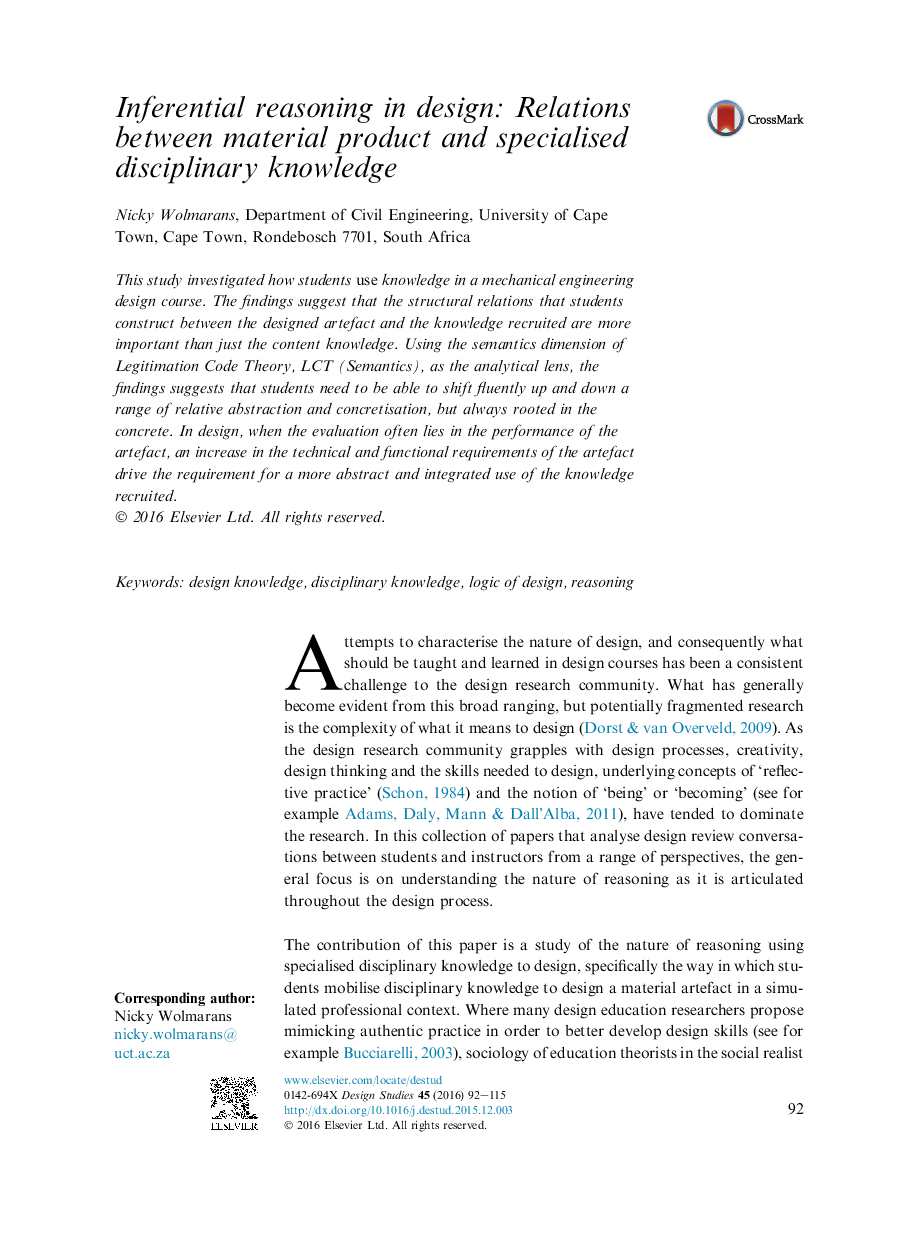| Article ID | Journal | Published Year | Pages | File Type |
|---|---|---|---|---|
| 261453 | Design Studies | 2016 | 24 Pages |
•The focus is reasoning based on specialised disciplinary knowledge in design.•Structural knowledge relations are analysed using LCT (Semantics) as a conceptual lens.•Successful design requires fluent movement between theory and context.•Complex artefacts drive complex disciplinary knowledge requirements.
This study investigated how students use knowledge in a mechanical engineering design course. The findings suggest that the structural relations that students construct between the designed artefact and the knowledge recruited are more important than just the content knowledge. Using the semantics dimension of Legitimation Code Theory, LCT (Semantics), as the analytical lens, the findings suggests that students need to be able to shift fluently up and down a range of relative abstraction and concretisation, but always rooted in the concrete. In design, when the evaluation often lies in the performance of the artefact, an increase in the technical and functional requirements of the artefact drive the requirement for a more abstract and integrated use of the knowledge recruited.
